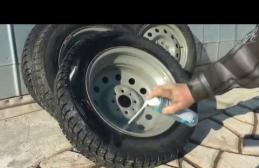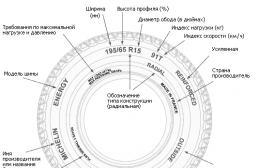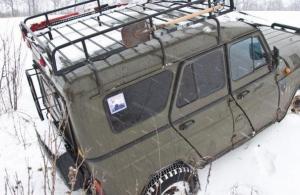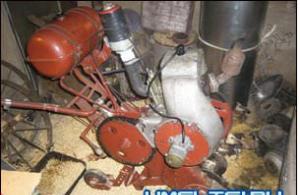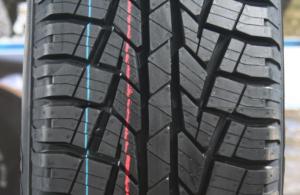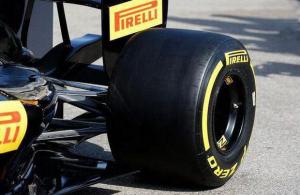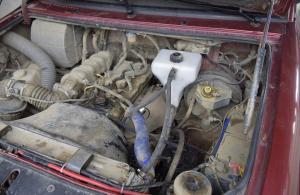






 The whole photo session
The whole photo session In motion, the diesel Sportage captivates primarily with lively reactions to the "gas" supply and the high-torque power of the power unit - peak thrust of 400 Nm is available at 1750-2750 rpm! At the same time, you can add agility to the crossover by drowning the Drive Mode button on the central tunnel (included in the basic equipment of cars with "automatic" and "robot"). Although, to be honest, the small button is not very well located - it gets lost among others, moreover, you want to use it often. When pressed, the tachometer needle rushes up the scale and the "automatic" starts to maintain low gears. At the same time, the steering wheel becomes more elastic, to which, after a change of generations, sharpness was added (instead of 2.8 revolutions from lock to lock, the steering wheel now makes 2.7).
Exchange rate stability remained at the same high level. At speeds over 150 km / h, the Sportage stays on a straight line as confidently as at 100 km / h, does not deviate from the trajectory in the rut and on the waves of asphalt, and the precise steering wheel adds confidence when cornering. At the same time, the traction control system also helps the "Korean" to storm the bends, directing more torque to the wheel with better grip.
The work of the engineers, who have strengthened the insulation of the engine compartment, floor and center tunnel, is also felt. Even at speeds above 100 km / h, mainly only aerodynamic noises from struts and mirrors make their way into the cabin (the predecessor, as you know, was not so "quiet").
Mild nature
The redesigned suspension adds to the crossover's lack of comfort. A stiffer rear subframe and different front arm mountings, coupled with increased body rigidity, have reduced noise and vibration levels. In turn, the shock absorbers received an increased rebound travel, which had a positive effect on the energy consumption of the chassis: the ride smoothness increased significantly. The new Sportage easily swallows small-caliber irregularities, annoying shaking only when driving deep holes and ledges. Moving on the broken asphalt has become much more comfortable, but it's still not worth rushing along the dirt road dotted with pits - the running business will not come to a breakdown, but it will shock you pretty much.
And what about the off-road potential? It remained at about the same “civil” level. The interaxle clutch connects the rear wheels with the beginning of slipping or during active maneuvering. On a quiet ride on dry surfaces, the Sportage behaves like a front-wheel drive vehicle. The clutch lock mode (thrust is divided between the axles in a 50:50 ratio) is activated using a button on the center tunnel and deactivated at speeds above 40 km / h. Already in the basic configuration, the crossover is equipped with a hill descent assistant, as well as an ESC stabilization system that simulates cross-axle locks. These opportunities are quite enough to get to a country cottage in the off-season, or, say, to get out of a courtyard littered with snow.
In a word, the complex of changes made to the KIA Sportage is extensive. Not surprisingly, the popular model has risen in price. Although not as much as many assumed: if the predecessor at the end of sales was offered at least 1,129,900 rubles, now dealers will ask for at least 1,189,900 rubles. True, the equipment will also be richer (ABS, ESC, "climate", electric outside mirrors, six airbags, 16-inch alloy wheels, Drive Mode Select driving mode, downhill start assist system). And the main rivals in the face
Parking- in this position, the selector is set only when
stationary vehicle.
The drive wheels are mechanically locked.
Reverse gear- in this position the selector sets -
only when the car is stationary with idling
running engine.
Neutral (idle position)- torque on the drive
wheels are not transmitted.
Forward movement / sports program- pregnant S transfer-
chi switch at higher engine speeds than in re-
bench press D
(momentary position) - selection between positions D and S
If Sport mode is selected with the engine running,
and the selector is in position D / S, box
gear automatically switches to mode E... Selector lever
this mode is not enabled.
In the mode E forward gears are automatically shifted
up or down at lower engine speeds than in mode D.
Selector lever lock
Fig. 243 Lock Button
In modes P and N the selector lever is locked to prevent accidental
activation of the mode for moving forward.
The selector lever is locked when the vehicle is stationary or
at a speed of up to 5 km / h.
Burning control lamp
indicates a locked selector.
Moving the selector lever out of P or N
Press the brake pedal and at the same time press the lock button.
in the direction of the arrow
To move the selector lever out of position N into position D / S need to
press only the brake pedal.
During fast switching with transition through the position N(For example,
from R v D / S) the selector is not locked. This allows, for example, releasing
jerk a car stuck in the snow. If the selector lever is
unpressed brake pedal is in position N longer than 2 seconds, then
it locks in this position.
If the selector lever cannot be moved out of position P the usual way
so, you can perform its emergency unlocking
Note
To transfer from the mode P into mode D / S or vice versa selector lever
should move quickly. This will prevent accidental activation of the
bench press R or N.
Motion

Manual gear shifting (Tiptronic)
Fig. 244 Selector lever / multifunction steering wheel
First read and take note of and on page 217.
Tiptronic mode allows you to shift gears with the selector lever or
paddle switches under the multifunction steering wheel
Changing to manual gear shifting with the selector lever
Move the selector lever out of position D / S to the right (by car with
right-hand drive - to the left). Tecu-
the currently engaged gear is retained.
Shifting to manual gear shifting with paddle shifters
switches under the multifunction steering wheel
For transition for manual shifting, shortly pull one of the
swivel gear selectors
For canceling manual shift pull the paddle shifter -
to the steering wheel and hold for more than 1 second.
If paddle switches
not used for longer than a certain
divided time, the manual switching mode is automatically
turns on.
Gear shift
For upshifting push the selector lever
torus forward
For downshifting push the selector lever
or pull the paddle switch shortly
The included gear is marked with a letter M on the display of the instrument combination
When accelerating, the transmission will automatically shift up
shortly before reaching the maximum permissible engine speed
gatel. When you select one of the lower gears, the automatic
only if the engine speed after that does not exceed the
allowed maximum.
Note
Manual shifting can be useful, for example, when driving on
slope down. In this situation, downshifting
will reduce the load on the brakes and reduce their wear.
Starting off and driving
First read and take note of and on page 217.
Starting off and stopping for a short time
Step on the brake pedal and keep it pressed.
Start the engine.
Press the lock button and move the selector lever to the desired position
Release the brake pedal and press the accelerator pedal.
For a short stop (for example, at an intersection) translate
selector lever to position N not required. However, you need to press the
brake distance to keep the vehicle from rolling.
Maximum acceleration while driving (kick-down function)
When the accelerator pedal is pressed all the way in the forward motion mode,
the kick-down function is turned on.
The gear shift is adapted accordingly to
achieve maximum acceleration.
Starting off and driving

Maximum acceleration when starting off (function
Launch Control)
Launch Control is available in S or Tiptronic.
Disable the start-stop system
Press and hold the brake pedal with your left foot.
Fully depress the accelerator pedal with your right foot.
Release the brake pedal - the car will move from the place with maximum
acceleration.
Driving at idle speed ("coasting mode")
When you release the accelerator pedal, the car moves without braking
engine.
Working conditions
The selector lever is in the position D / S.
Eco or Individual driving mode selected (Drive - Eco)
Travel speed is higher than 20 km / h.
Trailer or other auxiliary device is not connected to the trailer socket.
new equipment.
The gear is automatically engaged again if you press the accelerator pedal -
torus or brake or pull one of the switches
ATTENTION
Rapid acceleration can lead (for example, on a slippery road surface
cover) to loss of control of the vehicle - risk of accident!
Engine break-in and economical driving
Engine break-in
During the first 1,500 km, the quality of running-in of a new engine was
strongly depends on the driving style.
During the first 1000 km do not load the engine with high
in rotations (more than 3/4 of the maximum allowable) and do not tow a trailer.
In the range from 1000 to 1500 km the load on the engine can be increased
up to the maximum permissible speed.
Fuel efficient driving tips
Fuel consumption depends on driving style, road conditions, weather
conditions, etc.
For economical driving, the following rules must be observed.
Avoid unnecessary acceleration and deceleration.
Avoid driving with the accelerator pedal fully depressed and with maximum
maximum speed.
Reduce engine idling speed.
Avoid short distance travel.
Do not carry extra load with you.
Remove the roof rack from the roof before driving if not needed.
Switch on electrical consumers (e.g. heated seats)
exactly as much as necessary. The infotainment display in
/ → → Sis-we of comfort can be displayed from one to
three energy consumers, which currently account for
the highest fuel consumption.
Before turning on the air conditioner, ventilate the interior a little, do not use
Use the conditioner with the windows down.
Do not leave the windows down when driving at high speeds.
DriveGreen function
Display indications
Infotainment
driving style based on driving data.
Motion

DriveGreen can be viewed on the infotainment display in the menu
/ → → DriveGreen.
Smoothness indicator
With a uniform driving style, the indicator is in the middle (row-
house with a green dot). When accelerating, the indicator shifts downward, when
braking - up.
"Green leaf"
The greener the leaf, the more economical the driving style. With less economical
In the normal driving style, the sheet is displayed without green color or may be
all to disappear.
Bar chart
The higher the bar, the more economical the driving style. Each column is
Shows the driving economy in 5-second increments, the current bar is
The higher the value, the more economical the driving style. When you press
screen button
in the last 30 minutes.
If less than 30 minutes have passed since the beginning of the movement, then the rating is added -
Xia evaluation of the previous trip (dark green bars).
Average fuel consumption since the start of movement
When the on-screen button is pressed
a detailed overview of the average
th fuel consumption in the last 30 minutes.
If less than 30 minutes have passed since the beginning of the movement, then
the average fuel consumption of the previous trip (dark green bars).
Symbols
The following four symbols can be displayed on the screen, informa-
worried about the current driving style.
Economical driving style
The current speed has a negative effect on fuel consumption
Uneven movement should be avoided, i.e. unnecessarily frequent
Fuel efficient driving tips
When the sheet is pressed
tips for economical driving are displayed.
Note
When resetting to zero the mileage counter of a separate trip "from the start"
the mean fuel consumption values are reset
Economic estimates
mismatches
and diagrams
Vehicle damage prevention
Driving rules
You should only drive on roads or terrain that are appropriate
support the technical capabilities of the vehicle
ATTENTION
Choose the speed and driving style taking into account the visibility, weather
conditions, road condition and traffic situation. Wrong you-
abusive speed or erroneous maneuvers can cause injury
mimicking passengers and damage to the car.
Combustible materials such as lying on the ground or stuck under
the bottom of foliage or dry branches, may ignite when in contact
hot parts of the vehicle - risk of fire!
CAREFULLY
Always consider the vehicle's ground clearance. Items exceeding
the value of ground clearance, when hitting them can damage
automobile.
Objects stuck under the underbody of the vehicle must be removed as
as quickly as possible. These items can cause damage to the vehicle
(for example, parts of the fuel or brake system).
Starting off and driving
The Kodiaq crossover from the Czech brand Skoda is a long-awaited novelty on the Russian market. After attending a presentation organized by the Atlant-M Tushino dealer for my clients (I bought Rapid from them), and taking a ride on Kodiaq, I came to the conclusion that we have before us a new bestseller of the Russian market, even despite the considerable (from one and a half million rubles ) price. The test drive of the novelty only convinced me of this opinion.
I tried to substantiate my point of view in this text, for ease of reading it is divided into blocks-theses.
What is Kodiaq?
The name of the model is consonant with the name Kodiak, or Kodiak - this is the name of the island in the Kodiak archipelago at the southern tip of Alaska. This island is home to the largest brown bear species and one of the largest predators on the planet. His name, as you might have guessed, is Kodiak. The height of the kodiak at the withers is up to 1.6 m, the length is up to 3 m, and the weight is up to 780 kg. The total number of individuals of this species on the planet does not exceed 3000 heads. It is noteworthy that, like other bears, Kodiak males lead a bachelor lifestyle, while females stay with their cubs for three years.
This is a big car
Kodiaq is a mid-size crossover on the modular MQB platform from the Volkswagen Group. All new VAG models with a transverse engine are built on it.
Passat B8, Golf Mk7, Octavia Mk3, Superb B8, Tiguan Mk2, Arteon, TT Mk3 and so on. At the same time, the Czech is one of the largest cars on the MQB. Length 4697 mm, width excluding mirrors 1882 mm, wheelbase 2791 mm. And most importantly, this is one of the few cars on the MQB available in a seven-seater version!
Appearance
The Kodiaq is not a "lifted" Octavia, but rather a Superb Combi on steroids. At the same time, compared to the Superb at the front, the car looks less aggressive (if this can be said about Skoda at all), but more modern. Adaptive LED headlights are included in both available trim levels. The bottom of the body is finished in a circle with unpainted plastic.
At the rear, slanted triangles of LED lights and a sculpted tailgate and fenders add to life.
We have already seen something similar on BMW, but for Kodiaq this is not a minus. The edges on the sidewalls of the body organically connect the lights and headlights.
Outwardly, the Kodiaq is prettier than the Tiguan. IMHO, of course.
Surprises at the door
The first thing you notice when you open any Kodiaq side door is the retractable rubber door edge trims. They extend mechanically when the door is opened, protecting the edges and, above all, neighboring machines from damage by the opening door.
This solution was bought from Ford, but still, this concern is very touching. This fits well with the family values promoted by Skoda. That is, you have a chance not to explain to your child why you suddenly decided to rearrange the car, as soon as you opened the door in a tight parking lot near the supermarket ... The covers can be easily dismantled if desired. The only caveat to this system is that with overlays to close the door, you have to apply significantly more force than without them.
The second surprise is that at the end of each of the front doors there is a compartment with an automatic umbrella. Traditionally for Skoda and very convenient.
Interior
To be honest, sitting down in the Kodiaq I expected to see everything the same as in the Superb. It's great that I was wrong!
No, of course, there is a lot in common with other cars of the Czech brand, all the same climate control knobs and similar buttons, the tidy with a small color screen is taken from the new Octavia, but the impression from the interior is completely different.
This is also facilitated by the black textured inserts on the high torpedo (one of them hides the second glove compartment). Nice and functional!
Finishing materials are pleasant to the touch and look. The only thing that caused complaints - the plastic on the middle part of the door cards is frankly cheap and echoing. Also, the displays indicating the temperature of the climate (here it is three-zone) are too small. The glossy plastic covering them glares in the sun.
Wide and comfortable seats with pronounced lateral support are perhaps the best in the entire model range of the Czech brand. In the top-end configuration, they have position memory functions (including the passenger seat). A seat ventilation option is also available.
On the driver's door there is a button for blocking the rear doors from opening from the inside, as well as a button for opening and closing the luggage compartment. A storage box can be located under the front seat.
A storage compartment with a removable organizer is hidden in the center armrest.
The steering wheel is standard for Skoda, but for the first time it has a three-stage (!) Heating.
Another feature is a completely transparent (threadless), film heated windshield in bulk. There is a compartment for a phone with a wireless charger (option) under the climate twists.
Another chic option available for the Kodiaq is the 136 cm long panoramic two-piece sunroof.
Multimedia system
Skoda's most popular multimedia, Bolero, has been completely revamped. The side buttons are now touch-sensitive (controversial decision, but looks nice). The speed of work has increased significantly. The 8-inch screen has learned to perceive multi-touch and feel the approach of fingers - now this is how all pop-up menus work.
It is especially interesting to try it in the Area View mode. Pictures from four wide-angle cameras (resolution 1280 × 800 pixels, viewing angle 180 ° in the horizontal direction and 120 ° in the vertical direction) can be displayed in several different formats, including a top view. In this case, the typewriter on the screen can be twisted with your fingers, turning the whole picture in almost real time.
The color of the ambient lighting can be adjusted via the multimedia system (there are lamps only in the front doors). When adjusting the seat heating temperature, the corresponding indicators are duplicated on the screen.
The system supports MirrorLink, Apple CarPlay and Android Auto. Navigation is available in more sophisticated versions of the system - Columbus and Amundsen. The latter, in addition, has full touch control. There is a driver's voice amplification system - for easier communication with passengers at high speeds.
The disadvantage is that there is only one USB connector in the front of the tunnel under the sliding curtain, which is clearly not enough.
The basic Swing multimedia system with a 6.5-inch screen will be available only after the localization of the model.
Electronic assistants
In addition to the aforementioned Area View system, the test car had adaptive cruise control (in the base - up to 160 km / h, for a surcharge - up to 210 km / h), a blind spot monitoring system, a car parker, a front distance control system, an emergency braking system When SRS is triggered, reverse parking assist.
Another "trick" is the system of "proactive" protection of the driver and front passenger, which is able to tighten the belts in case of danger, close the hatch and windows (leaving a gap of 55 mm), and also signal the driver about danger or even brake independently.
Second row of seats
As I said, the second row is much more spacious than the Tiguan. There are bulk seats for passengers of any height. Has its own climate zone, heated seats. Behind a spring-loaded door at the bottom of the box is a USB connector and a 230 volt socket. Useful functions, but if a third passenger sits in the middle, he will touch the wires with his feet.
The chairs are quite comfortable, with longitudinal adjustments (1: 2), there is a central armrest, although by default the back is steep (the tilt is easy to change). The backs of the front seats have pockets and folding tables (for an additional charge, as are the mechanical curtains on the doors). Very useful options for traveling with children! The rear row provides for the installation of two Isofix-type seats, another such mount can be ordered for the front passenger seat.
Third row of seats
The gallery is the gallery if we are talking about a mid-size crossover. And Kodiaq is no exception in this regard. It is possible to transport adults of average height in the back row only by moving the second row at least a third forward. And even then, the knees of the gallery passengers remain lifted up into the sky, that is, there is no talk of comfort on long journeys. No back and no Isofix mounts.
But technically, the car is seven-seater, this cannot be taken away - and sometimes it may be necessary, especially if you have two children. To put a person on the back row, you need to do four steps - pull the loop at the end of the back of the second row chair to fold it, and move the chair itself, and then replace the chair and back. The backs of the second-row seats are folded with a mechanical hinge - no electric drives.
Trunk
The trunk is the strong point of the Kodiaq. A five-seater car with a docking station has a compartment volume of 636 liters. With a full-size spare tire, it shrinks by 52 liters. Even with the unfolded seats of the third row, a lot of space remains in the trunk (233 liters). If all the seats are folded into an almost flat floor, then the volume increases to 1980 liters for a five-seater car and 1968 for a seven-seater.
It is convenient to use the trunk. On the side wall there is a removable LED flashlight with a magnetic base, a 12V socket.
I liked the mechanism of the telescopic shutter - to fold it, you just need to press the front edge with your hand.
Under the floor there is an additional compartment, under it a dock, a jack, tools and an amplifier. On the sides there are also two drawers for small items and a first aid kit. There are also special grooves for storing the shutter in the removed state.
An electrically foldable towbar is available as an option.
Engines
Now is the time to move on to the technical details. So, at the moment all Skoda Kodiaqs in Russia will be only all-wheel drive and with DSG “robots”.
The base engine is 1.4 TSI (150 HP, 250 Nm in the range of 1500-3500 rpm). With it, acceleration of a 1.7 ton crossover to a hundred takes 9.9 s. Gearbox - "wet" six-speed DSG DQ250.
The second engine is a 150-horsepower turbodiesel with a volume of 2 liters. Torque - 340 Nm (1750-3000 rpm). Gearbox - 7DSG, also "wet" DQ500. Acceleration to 100 km / h - 10.2 s.
The third engine is a gasoline two-liter turbo engine that develops 180 hp. and 320 Nm (1400-3940 rpm). The declared dynamics is 8 seconds to one hundred.
The hood has two hydraulic seals, which is good news.
Four-wheel drive and cross-country ability
Plug-in all-wheel drive system - traditional for all-wheel drive vehicles
Skoda / Volkswagen. The Haldex / BorgWarner TorqTransfer Systems clutch is responsible for connecting the rear wheels. This system is well known and needs no further description. Unification…
However, the Kodiaq's all-wheel drive is primarily designed for road use. Geometric parameters hint at this - the ground clearance is only 188 mm, the entry angle is 19.1 degrees, the exit angle is 15.3, the ford depth is just over 20 cm.
Test drive Kodiaq
Landing - reference, the car is easily customizable. Go! Visibility raises no objections, although the outside mirrors could be larger.
For the test I got a car with a 180-horsepower gasoline engine with a standard suspension. The first impression of overclocking is rather bland, despite the declared 8 seconds to a hundred! For a "top" engine, I would like to be more agile - especially since a 220-horsepower version of this engine is installed on the same Tiguan.
But if you remember that we are talking about a family car, everything falls into place. For dynamic movement with passengers dear to the heart, the dynamics are quite enough, and even the tasteless hum of the engine at high revs does not spoil the impression of a slow, but uninterrupted acceleration and excellent smoothness.
Even on the optional 19-inch wheels (Pirelli Scorpion Verde, 235 / 50R19), the Kodiaq rides very smoothly and smoothly. The steering response is softer than the Tiguan with the adaptive suspension, the roll level is slightly higher - but the rider comfort is impeccable.
The chassis is very collected, handling on the asphalt is filled with precise reactions and nobility of manners. The car goes through high-speed turns with noticeable roll, but without premature drift.
A verified, light character!
Kodiaq does not notice small irregularities at all, and even large ones do not cause suspension breakdowns, responding only with a dull "boom". Compression travel is 2 centimeters longer than the Superb, and this translates into a noticeable increase in energy consumption - without sacrificing comfort.
The brakes turned out to be smoother than I expected - you need to apply more force to brake than, for example, on the Superb, but this does not cause discomfort and most likely will appeal to most not very experienced drivers. However, perhaps this feeling is due to the fact that the test car's odometer was only a few tens of kilometers.
Obviously, the version with adaptive suspension and the Driving Mode Select system will be more interesting for its versatility and the ability to customize the character of the car, but even without it - the big Skoda is stable on the high-speed line, moderately fast in turns and overall very pleasant to drive, although, I repeat , here and does not smell of excitement.
And also Kodiaq pleases with good, by the standards of the class, noise isolation - with a high-quality Canton audio system, you can even listen to jazz or classical music.
On the road, the Kodiaq generates genuine interest, which is not typical for this brand of cars. But don't worry, it won't be long ...
Who are the competitors?
Direct competitors of Kodiaq are Ford Kuga, Mazda CX-5, Nissan X-Trail, Renault Koleos, Kia Sorento, Mitsubishi Outlander, Hyundai Santa Fe. These cars are as close as possible to the "Czech" in size. In this company, the Kodiaq has the largest wheelbase, inferior in width by a few mm to the Sorento. It is slightly ahead of Santa Fe in length. At the same time, the volume of the trunk in the five-seater version is 636 liters, which is noticeably more than that of all competitors. Summing up - Kodiaq is more expensive than direct rivals, but larger, more modern in appearance and richer in equipment.
He's not your Tiguan
Despite the overall platform, the Kodiaq differs greatly from the Tiguan in both design and size and capacity. The wheelbase of the "Czech" is 11 cm longer, the body is 21 cm longer, the Skoda is wider and taller.
The suspensions are the same (MacPherson strut at the front and four-link at the rear), but they are tuned differently - the Skoda is more comfortable. As expected, there is more space in the Kodiaq - both in the trunk and in the second row.
All-wheel drive is the same (fifth-generation Haldex clutch), but the Tiguan has an optional 4Motion Active Control system that allows you to select the drive modes. The Kodiaq has the most you can get - offroad mode, and then with the Driving Mode Select system installed.
Also, only for the Tiguan, you can order the fully digital Active info Display instrument panel (analogous to the “virtual cockpit” from Audi). One more thing - on the Tiguan you can already install the DCC adaptive suspension, and on the Kodiaq it will be available only after the localization of car production in Russia, that is, not earlier than 2018. Also for Skoda, a virtual rear door electric pedal is not yet available. But only Skoda will have a seven-seat version in Russia.
Complete set
Currently, Kodiaq is imported to us from the Czech Republic in two configurations, each of which can be saturated with additional equipment.
Basic - Ambition Plus - costs 1,999,000 rubles with a 1.4 TSI engine. A diesel car will cost 2,309,000 rubles, and a petrol one with 2.0 TSI - 2,349,000 rubles.
This bundle is not bad. LED headlights, 17-inch alloy wheels, 6 airbags, keyless entry, heated windshield, front and rear parking sensors, multifunction steering wheel with heating, dual-zone climate, Bolero audio system, blind zone control system, monochrome Maxidot and much more.
The highest grade at the moment Style Plus has, in addition to the above, a driver's seat with an electric drive and memory, an electric boot lid, 9 airbags, an adaptive cruise, a parking lot, a 575-watt Canton speaker system, 18-inch discs, all-round visibility, three-zone climate, combination seats, front right Isofix fasteners, 230-volt power outlet, color display in the tidy, passenger protection and anti-theft system with alarm.
In general, a very good set, although you still have to pay extra for illuminated mirrors in sun visors, albeit only 400 rubles. The Driving Mode Selection system will cost 5600 rubles, but I don't see much point in ordering it without the adaptive suspension. Unless, take the version with Offroad-mode for 9,700 rubles, but it will require the Amundsen multimedia system - 29,200 rubles.
The prices for cars in the Style Plus package are 2,315,000 rubles (1.4), 2,615,000 rubles (2.0 TSI and 2,575,000 rubles (TDI)).
Summarizing Skoda's pricing policy, we can say that at the moment only fairly expensive configurations are offered, in which the Kodiaq turns out to be about 150-200 thousand rubles more expensive than a similarly equipped Tiguan.
Total
Skoda's traditional interclass positioning is fully evident in the Kodiaq.
The main idea is that for your money, you get more car. Kodiaq in top versions is somewhat more expensive than direct competitors, but at the same time it is larger, more ergonomic and better equipped. At the same time, it is still not bulky (length - 4.7 m), which will simplify the choice for the weaker sex.
The car has a modern appearance and offers a wide range of options. On the go, it differentiates itself for the better from most of its competitors in Japan and Korea, offering all the good things that an MQB cart can do.
In my opinion, in the price segment over two million rubles, a difference of a couple of hundred thousand will not be decisive for buyers. In addition, it is obvious that with the localization of production, more affordable and simple versions of Kodiaq will enter the market (the expected price is from 1,500,000 rubles).
Thus, Kodiaq has everything to become a bestseller in the Russian market in the future. And how it will be in reality - time will tell!

